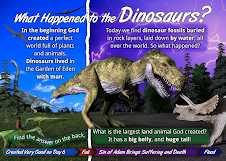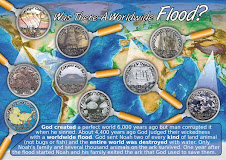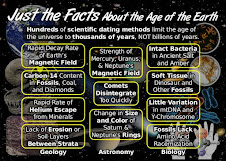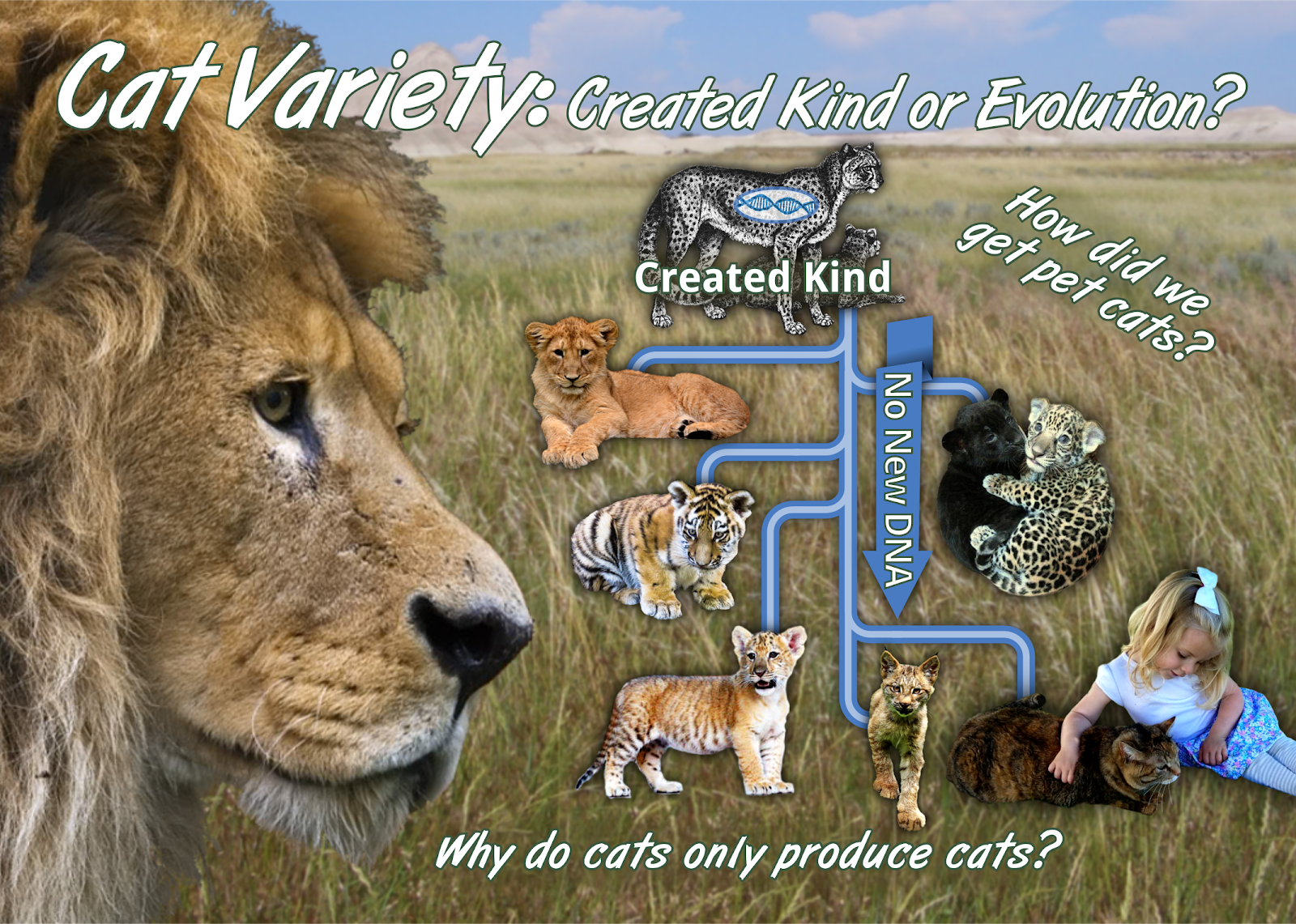Tuesday, September 17, 2019
Monday, August 19, 2019
Wednesday, August 14, 2019
The Evidences for Genesis 1-11 Keep Mounting
Indian Kangaroo Pictographs Challenge Evolution
by Brian Thomas, Ph.D., and Timothy Clarey, Ph.D.
Evolutionary narratives insist that kangaroos, and the marsupials they represent, evolved millions of years ago in Australia. Supposedly, that’s why today they only live there. In contrast, Genesis teaches that all animals—including kangaroos—migrated to their present locations from the Ark’s landing place “on the mountains of Ararat”1 in or near modern-day Turkey. New evidence fits this biblical option.
University of Madras archaeologist Jinu Koshy stumbled upon a jackpot. He found thousands of unique pieces of rock art in remote India while surveying the western Andhra Pradesh region. The red ochre pictographs include stick-figured humans, crude cows, deer, boar, and creatures that Koshy says look more like some kind of kangaroo than any other animal.
Marsupials in India? According to an article in an Indian online magazine named Scroll, the pictograph shapes show kangaroo similarities, including front limbs held aloft, kangaroo-like snouts, and possible pouches.2
https://www.icr.org/article/indian-kangaroo-pictographs-challenge-evolution/
Evolutionary narratives insist that kangaroos, and the marsupials they represent, evolved millions of years ago in Australia. Supposedly, that’s why today they only live there. In contrast, Genesis teaches that all animals—including kangaroos—migrated to their present locations from the Ark’s landing place “on the mountains of Ararat”1 in or near modern-day Turkey. New evidence fits this biblical option.
University of Madras archaeologist Jinu Koshy stumbled upon a jackpot. He found thousands of unique pieces of rock art in remote India while surveying the western Andhra Pradesh region. The red ochre pictographs include stick-figured humans, crude cows, deer, boar, and creatures that Koshy says look more like some kind of kangaroo than any other animal.
Marsupials in India? According to an article in an Indian online magazine named Scroll, the pictograph shapes show kangaroo similarities, including front limbs held aloft, kangaroo-like snouts, and possible pouches.2
https://www.icr.org/article/indian-kangaroo-pictographs-challenge-evolution/
Friday, August 9, 2019
We are so thankful for ministries like ICR!

Dinosaurs, the Smithsonian, and Evolutionist Desperation
BY
JAKE HEBERT, PH.D.
* | TUESDAY, JULY 09, 2019
The Smithsonian Institution in Washington D. C. just finished a five-year renovation of its dinosaur hall at a cost of around $110 million.1 The renovated exhibit opened to the public on June 8, 2019. Naturally, the television news segment made the usual references to “millions of years” and the supposed evolutionary history of life on Earth.
The most interesting aspect of the news story was a large museum placard. During the television segment, the viewer catches, at the 55-second mark, a fleeting glimpse of this placard, which quotes the very last sentence of Charles Darwin’s Origin of Species. Here is that sentence in its entirety:
The most interesting aspect of the news story was a large museum placard. During the television segment, the viewer catches, at the 55-second mark, a fleeting glimpse of this placard, which quotes the very last sentence of Charles Darwin’s Origin of Species. Here is that sentence in its entirety:
There is grandeur in this view of life, with its several powers, having been originally breathed into a few forms or into one; and that, whilst this planet has gone cycling on according to the fixed law of gravity, from so simple a beginning endless forms most beautiful and most wonderful have been, and are being, evolved.2
On the placard, the last six words are in large, bold print! It seems that someone at the Smithsonian wanted to make sure that visitors got the message regarding the “fact” of evolution. This heavy-handed attempt at indoctrination isn’t exactly subtle. One can’t help but wonder: Is this placard a literal “sign” that evolutionists are becoming increasingly frantic and desperate about the growing skepticism of the evolutionary story?
They have good reason to be concerned. Creation ministries like the Institute for Creation Research are having a real impact and are showing there is a much better way to make sense of the rocks and fossils.
Tuesday, July 23, 2019
Radiocarbon in Yet Another Dinosaur Fossil
https://www.icr.org/article/Radiocarbon-in-yet-another-dinosaur-fossil/
BY
BRIAN THOMAS, PH.D.
* | THURSDAY, JULY 18, 2019
Creation-based thinking made a testable prediction. If Noah’s Flood formed dinosaur and other fossils only 4,500 or so years ago, then they may still contain measurable amounts of the short-lived radioactive isotope carbon-14—also called radiocarbon. On the other hand, any fossil deposited before the limit of carbon-14 longevity (around 100,000 theoretical years ago) would have no carbon-14 left. Now, a team of secular scientists used radiocarbon to argue against the preservation of dinosaur collagen, but unwittingly affirmed the Flood option.
Examples of radiocarbon discoveries that are out-of-place for evolutionary time keep stacking up. Medical doctor Paul Giem accumulated dozens of examples back in 2001.1 His long list of secular publications cited radiocarbon in coal, oil, and marble. It inspired the ICR RATE project to look for radiocarbon in deeply buried coal and in supposedly ancient diamonds. RATE found radiocarbon at levels above the background blanks in all samples.2,3
In our 2015 report of new fossil samples with radiocarbon, coauthor Vance Nelson and I summarized a few dozen already published wood, shell, and bone fossils that bore evolutionary ages far in excess of their radiocarbon levels.4 That list had almost fifty samples. Now, a Chicago Field Museum-led team published one more in the journal eLife.5
It seems as though almost everywhere we look, we find young-looking carbon.
Examples of radiocarbon discoveries that are out-of-place for evolutionary time keep stacking up. Medical doctor Paul Giem accumulated dozens of examples back in 2001.1 His long list of secular publications cited radiocarbon in coal, oil, and marble. It inspired the ICR RATE project to look for radiocarbon in deeply buried coal and in supposedly ancient diamonds. RATE found radiocarbon at levels above the background blanks in all samples.2,3
In our 2015 report of new fossil samples with radiocarbon, coauthor Vance Nelson and I summarized a few dozen already published wood, shell, and bone fossils that bore evolutionary ages far in excess of their radiocarbon levels.4 That list had almost fifty samples. Now, a Chicago Field Museum-led team published one more in the journal eLife.5
It seems as though almost everywhere we look, we find young-looking carbon.
Tuesday, June 11, 2019
Thursday, May 9, 2019
It's true, scientists question the Big Bang idea
An Open Letter to the Scientific
Community
cosmologystatement.org
cosmologystatement.org
(Published in New Scientist, May 22,
2004)
The big bang today relies on a growing number
of hypothetical entities, things that we have never observed--
inflation, dark matter and dark energy are the most prominent
examples. Without them, there would be a fatal contradiction between
the observations made by astronomers and the predictions of the big
bang theory. In no other field of physics would this continual
recourse to new hypothetical objects be accepted as a way of bridging
the gap between theory and observation. It would, at the least, raise
serious questions about the validity of the underlying theory.
But the big bang theory can't survive without
these fudge factors. Without the hypothetical inflation field, the big
bang does not predict the smooth, isotropic cosmic background
radiation that is observed, because there would be no way for parts of
the universe that are now more than a few degrees away in the sky to
come to the same temperature and thus emit the same amount of
microwave radiation.
Without some kind of dark matter, unlike any
that we have observed on Earth despite 20 years of experiments,
big-bang theory makes contradictory predictions for the density of
matter in the universe. Inflation requires a density 20 times larger
than that implied by big bang nucleosynthesis, the theory's
explanation of the origin of the light elements. And without dark
energy, the theory predicts that the universe is only about 8 billion
years old, which is billions of years younger than the age of many
stars in our galaxy.
What is more, the big bang theory can boast of
no quantitative predictions that have subsequently been validated by
observation. The successes claimed by the theory's supporters consist
of its ability to retrospectively fit observations with a steadily
increasing array of adjustable parameters, just as the old Earth-centered
cosmology of Ptolemy needed layer upon layer of epicycles.
Yet the big bang is not the only framework
available for understanding the history of the universe. Plasma
cosmology and the steady-state model both hypothesize an evolving
universe without beginning or end. These and other alternative
approaches can also explain the basic phenomena of the cosmos,
including the abundances of light elements, the generation of
large-scale structure, the cosmic background radiation, and how the
redshift of far-away galaxies increases with distance. They have even
predicted new phenomena that were subsequently observed, something the
big bang has failed to do.
Supporters of the big bang theory may retort
that these theories do not explain every cosmological observation. But
that is scarcely surprising, as their development has been severely
hampered by a complete lack of funding. Indeed, such questions and
alternatives cannot even now be freely discussed and examined. An open
exchange of ideas is lacking in most mainstream conferences. Whereas
Richard Feynman could say that "science is the culture of
doubt", in cosmology today doubt and dissent are not tolerated,
and young scientists learn to remain silent if they have something
negative to say about the standard big bang model. Those who doubt the
big bang fear that saying so will cost them their funding.
Even observations are now interpreted through
this biased filter, judged right or wrong depending on whether or not
they support the big bang. So discordant data on red shifts, lithium
and helium abundances, and galaxy distribution, among other topics,
are ignored or ridiculed. This reflects a growing dogmatic mindset
that is alien to the spirit of free scientific inquiry.
Today, virtually all financial and
experimental resources in cosmology are devoted to big bang studies.
Funding comes from only a few sources, and all the peer-review
committees that control them are dominated by supporters of the big
bang. As a result, the dominance of the big bang within the field has
become self-sustaining, irrespective of the scientific validity of the
theory.
Giving support only to projects within the big
bang framework undermines a fundamental element of the scientific
method -- the constant testing of theory against observation. Such a
restriction makes unbiased discussion and research impossible. To
redress this, we urge those agencies that fund work in cosmology to
set aside a significant fraction of their funding for investigations
into alternative theories and observational contradictions of the big
bang. To avoid bias, the peer review committee that allocates such
funds could be composed of astronomers and physicists from outside the
field of cosmology.
Allocating funding to investigations into the
big bang's validity, and its alternatives, would allow the scientific
process to determine our most accurate model of the history of the
universe.
Saturday, April 27, 2019
Summer 2019 Fairs
We are anticipating another tremendous summer at the fairs!
July 17-21
Waukesha Expo in Waukesha, WI
Waukesha County Fair
July 18-21
Alliant Energy Center in Madison, WI
Dane County Fair
August 1-11
State Fair Park in West Allis, WI
Wisconsin State Fair
August 30- September 3
Plymouth, WI
Sheboygan County Fair
July 17-21
Waukesha Expo in Waukesha, WI
Waukesha County Fair
July 18-21
Alliant Energy Center in Madison, WI
Dane County Fair
August 1-11
State Fair Park in West Allis, WI
Wisconsin State Fair
August 30- September 3
Plymouth, WI
Sheboygan County Fair
Friday, March 22, 2019
Wednesday, January 23, 2019
How old are fossils?
Fossil time ranges continue to expand up and down

For the last few decades, several creationists have been reporting on the vertical expansion of fossil ranges, interpreted as either ‘older’ or ‘younger’ in the geological column timescale. These finds are probably the tip of the iceberg, since we cannot go through all the relevant journals that would report range expansions. In fact, many of these issues likely go unreported because many ‘anomalous’ or ‘uninteresting’ fossils end up in the back shelves of museum collections, as Dr Carl Werner has discovered.1 As such, it is hard to know just how large the scale of this phenomenon is, though it is almost certainly more severe than reported in any literature, secular or creationist.
Some range expansions are quite large, such as moving the time boundaries by 50 to 100 Ma or more. Some examples are: the pushing back of eukaryote evolution one billion years;2 the discovery of grass in dinosaur dung from the Mesozoic;3 ‘sophisticated’, diverse mammals now found in the Mesozoic;4 and the origin of flowering plants may have been pushed back 100 Ma.5,6 Moreover, organisms that were thought to be extinct for many millions of years are found to be living, such as the Wollemi pine found alive in New South Wales, Australia.7 Archeological discoveries also contribute to the range expansions by indicating man was always smart, making it less likely he evolved.8
Many of these range expansions are not considered too significant, being only a matter of millions of years or from a fossil that is not used as an index fossil. Nonetheless, it still indicates that the fossil record is not precisely timed as evolutionists often make it out to be. Moreover, it accentuates the problem of stasis, revealing the ad hoc nature of much evolutionary storytelling about the fossils. Essentially, it shows that evolution and deep time act more as assumptions constraining their interpretation of the fossil record than as conclusions they draw from the fossil record.
https://creation.com/more-fossil-range-expansions
Subscribe to:
Posts (Atom)









